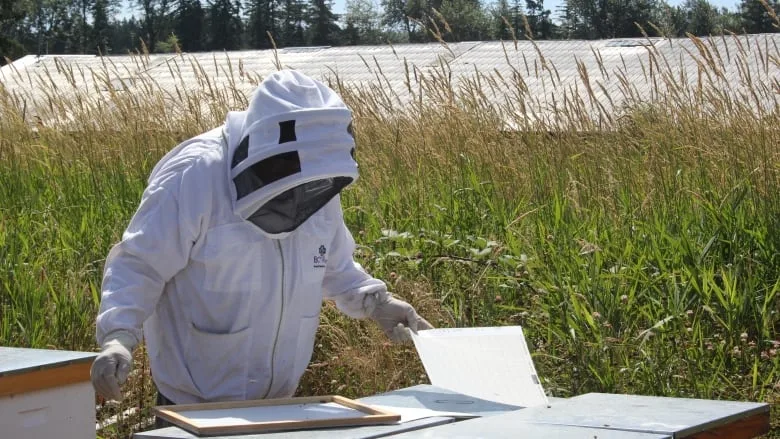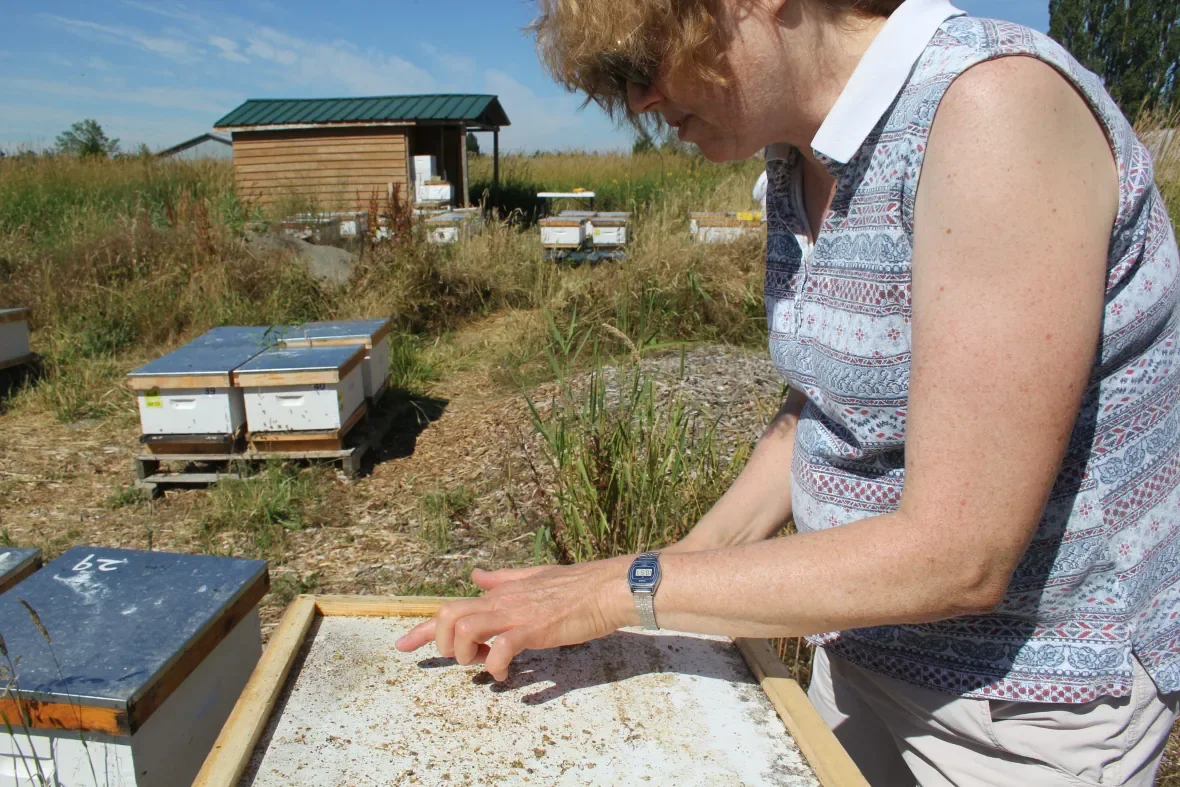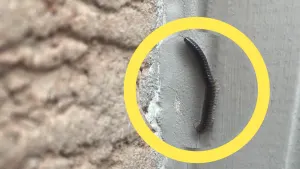
Scientists may have found new way to protect bee colonies from deadly mites
If Janne Potter didn't have to deal with mite infestations, she says her life as a beekeeper would be much easier.
"The mites suck the nutrients out of your bees, get on them and ride them, then they eventually kill your bees. You could also end up with deformed bees," said Potter, who runs EquiFlora honey farm in Vancouver.
READ MORE: Major colony losses have Canadian beekeepers feeling spring sting
That's why she is supportive of the efforts of a team of Simon Fraser University researchers developing a chemical compound that could paralyze and eventually kill parasitic varroa mites.
Varroa mites are a nuisance for beekeepers worldwide and if left untreated can decimate entire colonies over the winter. The mites attack and feed on bees, leaving them vulnerable to secondary diseases.
Preliminary data released by the Canadian Association of Professional Apiculturists last month shows nearly half of Canada's honeybee colonies didn't survive the winter. It was the largest rate of colony loss in Canada in the last 20 years and the association largely blames the varroa mite.

Researchers at SFU are conducting field trials at an apiary in South Surrey. They're testing the efficacy of a substance that can paralyze and kill varroa mites. (Submitted by SFU)
The SFU researchers found that the chemical compound — code-named 3C36 — can paralyze varroa mites without harming bees.
Erika Plettner, an SFU chemistry professor and researcher, is testing the compound at an apiary in South Surrey. The trial is in its third year.
"The mites poke a hole in the bee's exoskeleton wherever they're vulnerable. The problem is that the bee has wounds that don't heal and it's open to viruses and bacteria," said Plettner.
Potter uses an array of treatments, including a combination of chemicals, to fight off parasitic varroa mites at her apiary.
She is curious about how long 3C36's efficacy might last.
WATCH: Female bees cope better than males during temperature extremes
"Resistance to some of the drugs is a big problem," said Potter, noting ways in which some mites mutate to endure drug treatments.
"It runs the risk like all the other drugs of being the 'wonder drug' for a few years and then not quite so well," said Potter.
'Many repeated trials'
To test the 3C36 compound, researchers use cardboard tablets and sticky sheets with a grid underneath, which sift mites that can fall from the hive.
"It's many repeated trials," said Plettner. "We have seen some very promising activity both in the lab and in the field."
Plettner and her team came upon the discovery accidentally. She was involved in studying the sense of smell in insects during her post-doctoral studies at the University of Utah.

SFU chemistry professor Erika Pletter trials the 3C36 chemical compound at a South Surrey apiary. She uses sticky sheets to sift varroa mites from honeybee hives. (Submitted by SFU)
She and her team were trying to develop substances that could interfere with insects' food choices.
"We decided to test it against other arthropods and among them was the varroa mite," said Plettner. "That's how I came upon the study."
She also notes it might take years for the compound to get approved and industrialized.
"We do have to be realistic. There are still some years ahead of us," she said.
Still, beekeepers like Potter help motivate Plettner and the other researchers.
"If it's something that's easy to use and safe — to the bees, the honey, the environment, and the people using it — then it would be a very good thing."
She also stresses affordability.
"If it's expensive, then the cost of honey will go up, same as everything else."
The story, written by Ali Pitargue, was originally published for CBC News. It contains files from The Canadian Press.










